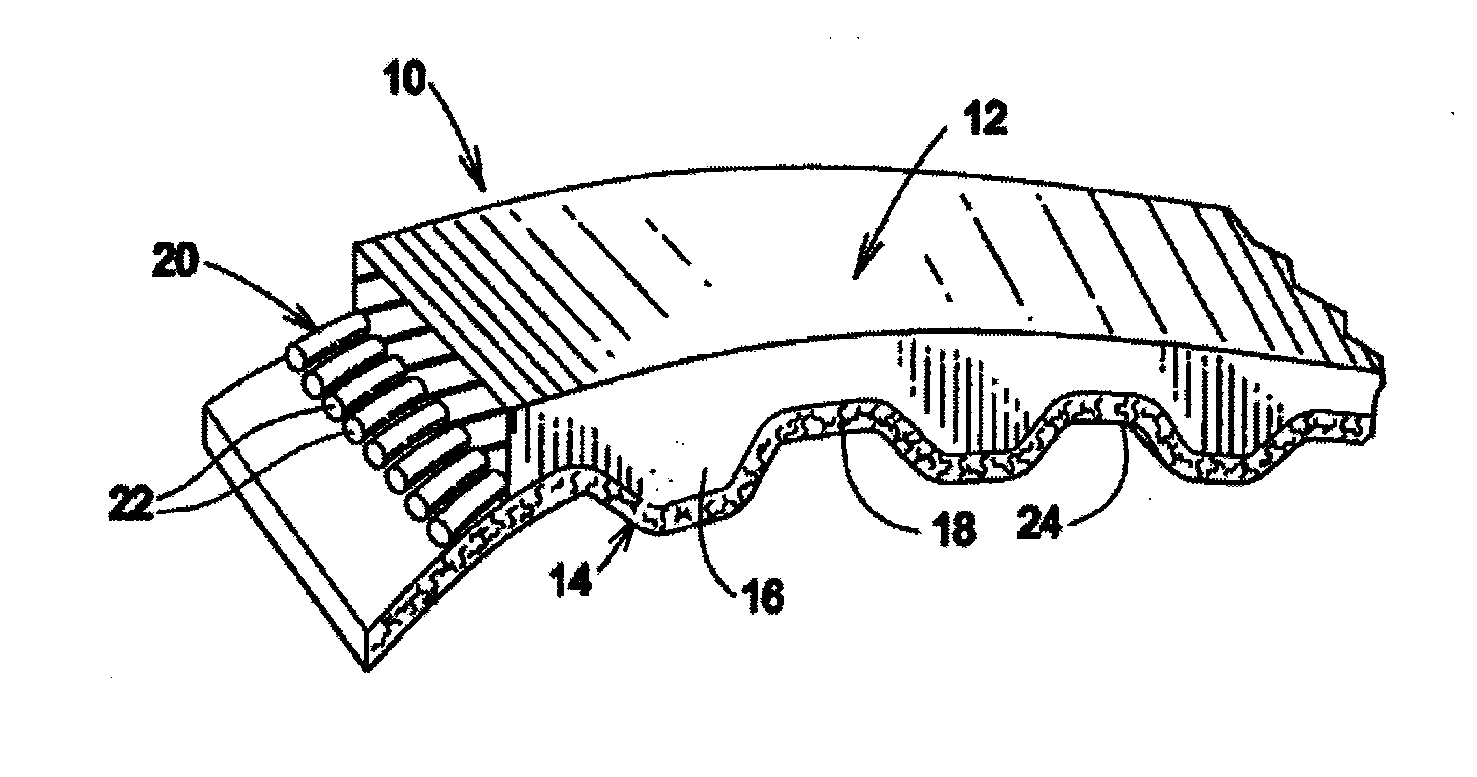Polyurea-Urethane Cord Treatment for Power Transmission Belt and Belt
a technology of tensile cord and power transmission belt, which is applied in the direction of paper/cardboard containers, transportation and packaging, containers, etc., can solve the problems of unacceptable parts cord material, unacceptably high bending modulus, and cord failure, and achieve good adhesion and excellent tensile strength. , the effect of improving handling
- Summary
- Abstract
- Description
- Claims
- Application Information
AI Technical Summary
Benefits of technology
Problems solved by technology
Method used
Image
Examples
examples
[0061]The following illustrations and examples are not meant to limit the invention, but demonstrate its usefulness in various embodiments. Examples demonstrate use of the invention in cast polyurea-urethane belt applications, TPU belt applications, and rubber belt applications.
[0062]Illustration I.
[0063]A pair of 12 k-1 yarns identified as G30 700 12 k HTA-7C from Toho were twisted in opposite directions to a level of 2.0±0.1 turns per inch to form “S” and “Z” 12 k carbon cords. A portion of the greige, twisted cord was used to make a slab of cast PU toothed belts of 8-mm pitch according to the method of U.S. Pat. No. 5,807,194 to Knutson et al., referred to herein as Comparative Example 1 (“Comp. Ex.” 1). Another portion of the cord was treated according to an embodiment of the present invention and then used to make a second slab of inventive 8-mm-pitch, toothed belts, referred to herein as Example 2 (“Ex.” 2).
[0064]For the PUU adhesive treatment of Ex. 2, a blend of di- and tri-...
PUM
| Property | Measurement | Unit |
|---|---|---|
| diameter | aaaaa | aaaaa |
| diameter | aaaaa | aaaaa |
| weight percent | aaaaa | aaaaa |
Abstract
Description
Claims
Application Information
 Login to View More
Login to View More - R&D
- Intellectual Property
- Life Sciences
- Materials
- Tech Scout
- Unparalleled Data Quality
- Higher Quality Content
- 60% Fewer Hallucinations
Browse by: Latest US Patents, China's latest patents, Technical Efficacy Thesaurus, Application Domain, Technology Topic, Popular Technical Reports.
© 2025 PatSnap. All rights reserved.Legal|Privacy policy|Modern Slavery Act Transparency Statement|Sitemap|About US| Contact US: help@patsnap.com



